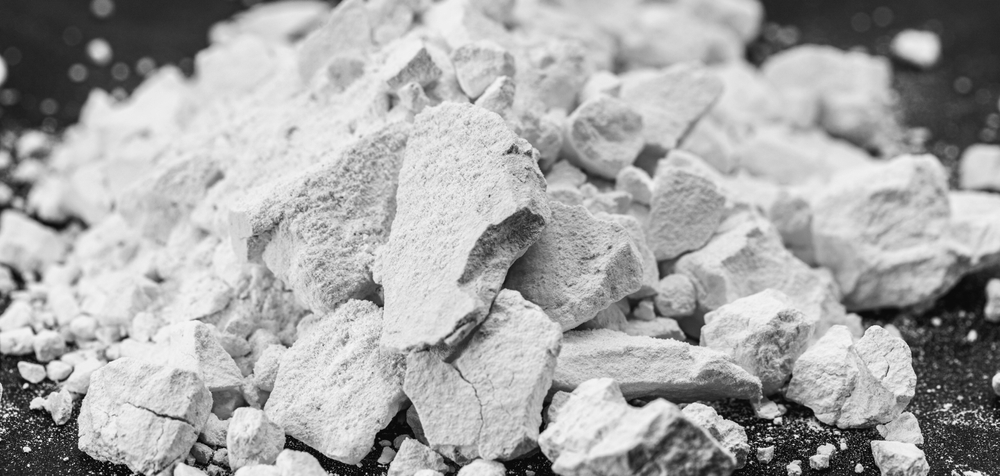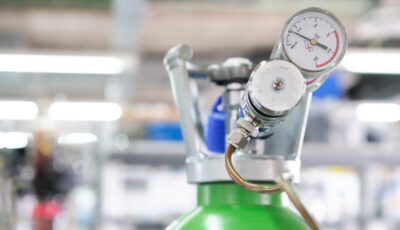Zeolite Molecular Sieve: Guide to Adsorption and Catalysis
Zeolite molecular sieves are used in various industries, including natural gas purification, air separation processes, petroleum refining, and industrial drying. They play a critical role in removing impurities, moisture, and contaminants from different gas and liquid streams, contributing to enhanced product quality and process efficiency.

Into the Basics: What is a Zeolite Molecular Sieve?
Zeolite molecular sieves may sound complex, but at their core, they are crystalline materials with tiny, evenly-sized pores. These pores create a framework similar to a honeycomb, allowing them to act like microscopic sponges that can absorb certain molecules while excluding others.
Structure: The Honeycomb Framework
Imagine if you could shrink down and explore the structure of a zeolite molecular sieve. You’d notice that it’s made up of tetrahedra—little clusters—linked together in a framework with holes or cages in between. The size and shape of these pores can vary depending on the specific type of zeolite. Some have larger pores, while others are more intricate with smaller ones.
This unique structure is what gives zeolites their incredible adsorption abilities. Just like a filter that catches particular particles, zeolites can selectively absorb molecules, making them a crucial component in various industrial processes where separation and purification are required.
Now, you might be wondering how this plays out in real-world applications? Well, zeolites have become staples in multiple industries like petrochemicals, air separation, refining, and renewable fuels due to this exceptional capability.
Pores and Cavities: Key Features of Zeolite Structure
When it comes to zeolite molecular sieves, what really makes them stand out are their microscopic pores and cavities. These interconnected channels create a sort of intricate maze within the structure, almost like tiny tunnels that molecules pass through. The size and shape of these channels are so uniform, they can be likened to a perfectly organized miniature city with roads and alleyways all meeting at precise angles.
The micropores in zeolite molecular sieves typically range from 3 to 10 angstroms in size. For reference, an angstrom is about the diameter of a single atom. Imagine countless tiny chambers and passageways within the zeolite structure, each one meticulously engineered to allow specific molecules to travel through.
These micropores offer an expansive surface area within the zeolite structure, creating ample space for adsorption and catalytic reactions to occur. It’s like having a bustling marketplace where different molecules come and go, interacting with the zeolite material in unique ways.
What’s truly fascinating about these pores is their ability to selectively trap and release molecules based on their size and polarity. Just as a key fits into a lock, certain molecules are perfectly matched to the dimensions and chemical properties of the zeolite pores. This selective interaction is crucial in processes such as natural gas purification, air separation, petroleum refining, and industrial drying.
The combination of uniform pore size and selective adsorption allows zeolites to function as molecular filters, separating desired molecules from mixtures more efficiently than other materials. This is why zeolite molecular sieves are highly valued in industries that require precise separation and purification processes.
“The intricate network of pores within zeolite molecular sieves is truly a marvel of scientific engineering. It’s like nature’s own nanotechnology at work.” – Dr. Smith, Materials Scientist
In essence, the beauty of zeolite structure lies in its ability to create an environment where millions of molecules interact with precision and purpose. Just as a well-designed city ensures smooth flow and organization among its inhabitants, zeolites orchestrate molecular interactions with remarkable efficiency and accuracy.
Understanding the intricacies of these micropores paves the way for a deeper appreciation of how zeolite molecular sieves function as reliable adsorbents and catalysts in various industrial processes.
Unveiling the Properties of Zeolite Molecular Sieve
Zeolite molecular sieves are captivating materials with exceptional properties that make them invaluable for various industrial applications. Let’s explore these properties in detail to gain a deeper understanding of their significance and impact on adsorption and catalysis processes.
High Adsorption Capacity
Zeolite molecular sieves boast an impressive internal surface area and uniform pore structure, contributing to their exceptional adsorption capacity. The extensive network of pores within the zeolite structure provides ample space for the adsorption and desorption of various molecules, ranging from water and CO2 to hydrocarbons. This unique characteristic allows zeolites to effectively trap and release target molecules, making them indispensable in processes like gas separation, dehydration, and odor control.
Thermal Stability and Reliability
One of the most notable attributes of zeolite molecular sieves is their remarkable thermal stability. This quality makes them well-suited for applications involving high temperatures, such as catalytic cracking processes in the petrochemical industry. Zeolites can withstand elevated temperatures without undergoing structural deterioration or loss of adsorption capacity, ensuring consistent performance in demanding thermal environments. Their stability under harsh thermal conditions enhances their reliability and longevity in industrial catalytic processes, providing a crucial advantage over other adsorbent materials.
Chemical Inertness and Longevity
The chemical inertness exhibited by zeolite molecular sieves is a key factor in their widespread use across diverse industrial settings. Their resistance to corrosion and degradation in aggressive chemical environments ensures their longevity and reliability in critical applications. Whether exposed to acidic, alkaline, or highly reactive substances, zeolites maintain their structural integrity and adsorption performance, making them an indispensable asset in industries where chemical durability is paramount. This resilience positions zeolite molecular sieves as essential components in processes involving acid gas removal, solvent drying, and liquid-phase reactions.
In essence, these distinctive properties collectively contribute to the exceptional performance of zeolite molecular sieves in adsorption and catalysis processes. By harnessing these properties, our ability to optimize processes, enhance efficiency, and minimize environmental impact is greatly augmented. Furthermore, understanding these properties empowers us to leverage the full potential of zeolites in catalytic converters, air purification systems, petrochemical refineries, and numerous other applications.
With this enhanced understanding of the properties of zeolite molecular sieves, we’re better equipped to appreciate their pivotal role in driving innovation and sustainability within industrial processes.
Peeking into the Adsorption Properties of Zeolites
Zeolites act like tiny sponges that can soak up certain things while letting others pass through. Their microporous structure gives them this ability to selectively take in molecules based on their size. Think of it this way: if you have a net with tiny holes, only small fish can get caught while bigger fish swim right through.
For example, in air separation processes, zeolites can be used to separate oxygen from nitrogen. This is possible because zeolites can effectively trap nitrogen molecules due to their size, while allowing smaller oxygen molecules to pass through, resulting in the production of high-purity oxygen.
Understanding Adsorption Selectivity
We use the term “selective adsorption” to describe this ability. It’s akin to a bouncer at a club—only certain guests are allowed in while others are turned away, determined by the size of the molecules.
In natural gas purification, zeolite molecular sieves play a critical role in removing water and sulfur compounds from the gas stream. They are designed to selectively capture these impurities while allowing the natural gas to flow through.
This selectivity also makes zeolites invaluable in refining processes for hydrocarbon streams. By using zeolite molecular sieves, impurities like water or sulfur compounds can be removed, enhancing the quality and value of the end product.
The Role of Adsorbent Size
The size of the pores in zeolites determines what can enter and what cannot. The pore size acts as a gatekeeper—it lets certain molecules in while blocking others out. This reliance on molecular dimensions is what gives zeolites their incredible adsorption efficiency.
For instance, when handling hydrocarbons in petrochemical plants, zeolite adsorbents are used to remove impurities like oxygenates, which are larger and hence trapped by the zeolite while the hydrocarbons pass through.
In understanding these adsorption properties of zeolites, it becomes clear how they have become indispensable in many industrial processes for their ability to selectively filter and retain specific molecules based on their size and characteristics.
Wide-scale Industrial Applications of Zeolite Sieves
Zeolite molecular sieves play a crucial role in various industries, serving as an essential component in multiple processes, each with distinctive requirements and demands. From ensuring the safety and quality of natural gas to contributing to the production of high-purity nitrogen and oxygen, zeolite sieves are indispensable in a wide array of industrial applications.
Air Separation
In the field of air separation, zeolite molecular sieves are instrumental in obtaining high-purity nitrogen and oxygen. These gases are used in numerous critical applications such as healthcare, food packaging, and electronics manufacturing. The ability of zeolite sieves to selectively adsorb certain molecules while allowing others to pass through makes them invaluable for separating and purifying gases. This process is integral in creating an environment where contaminants are eliminated, ensuring the safety and efficacy of these products.
Petroleum Refining
When it comes to the petroleum refining industry, zeolite molecular sieves play a pivotal role in catalytic cracking and hydrocarbon purification processes. By facilitating these crucial processes, zeolite sieves enable the production of high-quality fuels and petrochemical products that meet stringent industry standards. The precise pore structure of zeolites allows them to selectively adsorb impurities and enhance the quality and value of the final refined products.
Natural Gas Drying
In natural gas dehydration, zeolite sieves effectively remove water and impurities from natural gas streams. This is integral to ensuring the quality and safety of natural gas for transportation and consumption. The ability of zeolite molecular sieves to efficiently adsorb water molecules while allowing clean natural gas to pass through is paramount for meeting industry regulations and maintaining safe operations.
For instance, in the case of natural gas drying, moisture content can corrode pipelines and equipment, decrease heating efficiency, and affect the combustion process if not removed. Zeolite molecular sieves provide a reliable solution for removing this moisture content efficiently and effectively.
The extensive use of zeolite molecular sieves across these diverse applications highlights their versatility and indispensable value in ensuring operational efficiency, product quality, and safety within numerous industrial processes. Their ability to selectively adsorb specific molecules while allowing others to pass through makes them vital components in various industries.
The Making of Synthetic Zeolite: Preparation Steps
Creating synthetic zeolite molecular sieves is a meticulous and intriguing process. It involves a series of specific steps aimed at producing zeolites with tailored properties to suit various industrial needs. One of the key initial steps in this process is the preparation of a reactive gel containing silica and alumina sources.
This reactive gel serves as the foundation for the formation of synthetic zeolites. Combining silica and alumina sources initiates the chemical reaction required to kickstart the crystallization process. This step is crucial, as it sets the stage for the subsequent stages of zeolite synthesis. By carefully controlling the composition and proportion of these sources, researchers can manipulate the resulting zeolite’s properties, such as pore size, surface area, and ion-exchange capacity, to align with specific industrial requirements.
The next critical phase in creating synthetic zeolite involves subjecting the reactive gel to hydrothermal treatment at elevated temperatures and pressures. This process catalyzes the transformation of the gel into crystalline zeolite frameworks. Hydrothermal treatment allows for controlled crystallization and is fundamental in determining the final structure and properties of the synthetic zeolites.
During hydrothermal treatment, the reactive gel undergoes a series of intricate molecular rearrangements under high-temperature and high-pressure conditions, enabling the formation of well-defined zeolite crystals. By adjusting parameters such as temperature, pressure, and duration, scientists can intricately tune the size, shape, and arrangement of pores within the synthetic zeolites. This level of precision in tailoring structural characteristics allows for the creation of specialized adsorbents and catalysts optimized for distinct applications across industries such as petrochemicals, air separation, and natural gas refining.
Furthermore, post-synthesis modifications to the composition and structure of synthetic zeolites offer an additional layer of customization. These adjustments can be made during synthesis or through post-treatment processes, providing versatility in designing adsorbents with specific molecular recognition properties or tailored acidity for catalytic applications.
Understanding this intricate preparation process sheds light on how synthetic zeolites are meticulously crafted to fulfill a diverse array of industrial needs, emphasizing their importance as versatile tools in adsorption and catalysis.
In illuminating the complex preparation process behind synthetic zeolites, we gain insights into their paramount role as customizable assets across industries.
Catalyst Power: Role of Zeolite Sieve in Catalysis
Zeolites are more than just molecular sieves; they are remarkable catalysts unlocking the potential for efficient and selective chemical reactions. Their porous structure and adjustable pore size make them highly desirable as catalysts in various industrial processes. When it comes to catalysis, zeolites excel at providing active sites for chemical reactions, enabling precise control over the shape and size of molecules that can enter their framework. In doing so, zeolite molecular sieves act as gatekeepers, determining which molecules can participate in a reaction based on their size and shape.
Imagine a strict bouncer at a nightclub who only allows people with specific wristbands to enter. In a similar way, zeolites selectively permit certain molecules to engage in chemical reactions based on their “wristband”—their size and shape. This property is what makes zeolite molecular sieves invaluable in catalytic applications, as they can steer chemical pathways towards desired products while minimizing unwanted side reactions.
This selectivity is particularly evident in processes such as hydrocracking, isomerization, and selective oxidation, where controlling the pathways of complex chemical reactions is crucial for achieving high product yields and desired selectivity. For example, in hydrocracking—the process of breaking down large hydrocarbon molecules into smaller, more valuable ones—zeolites’ shape-selective properties guide the formation of specific hydrocarbon products by allowing only certain molecules to access their internal structure.
Moreover, in isomerization—a process that transforms one molecule into another with the same atoms but arranged differently—zeolite catalysts play a vital role in steering the reaction towards the formation of the desired isomers. Similarly, in selective oxidation, which involves chemically transforming a substance through the addition of oxygen, zeolites facilitate the production of target compounds by channeling specific molecules through their unique pore structure.
Just as a master sculptor meticulously shapes clay to craft a specific form, zeolites sculpt chemical reactions to yield precise products with enhanced selectivity and efficiency. This ability to fine-tune reaction paths to favor desired outcomes is what makes zeolite molecular sieves indispensable tools in the realm of catalysis.
By harnessing the power of shape-selective catalysis, zeolite molecular sieves elevate reaction efficiency and product selectivity while paving the way for sustainable and optimized industrial processes.
To learn more about how zeolite molecular sieves can optimize your industrial processes, get in touch with us at HengYe Inc. Call us at (844) 308-3271 or visit our website Hengye Inc.


